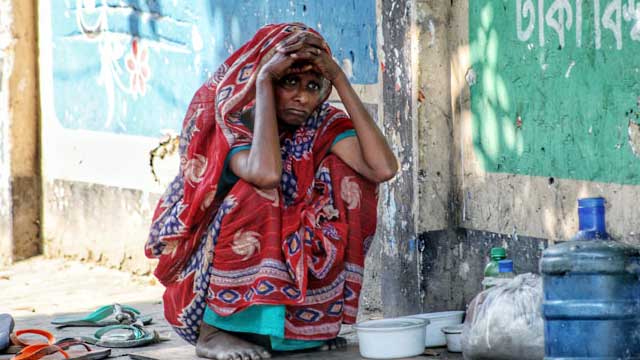At least 14% of low-income people does not have any food at home due to the coronavirus pandemic, while extreme poverty has risen 60 percentage points than before, says a survey conducted by Brac.
BRAC's Advocacy for Social Change program conducted the survey among 2,675 respondents from low-income background in all 64 districts from March 31 till April 5, says a press release.
They carried out the survey with assistance from other programs, namely Microfinance and Urban Development and Partnership Strengthening Unit.
Before the pandemic started, the per capita income of 24% of the respondents was below the national lower poverty line, and 35% were below the national upper poverty line.
Following the loss of income, the same share has increased to 84% and 89%, respectively.
It means that 89% of the respondents now live in extreme poverty.
It also means that the incidence of extreme poverty rose by 60 percentage points and poverty by 54 percentage points among the respondents.
The average household income of the 2,675 respondents was Tk14,599 before the Covid-19 pandemic.
Of them, 93% of the respondents reported a decline in income due to the outbreak. During March 2020, their average income stood at Tk3,742, which represents an average 75% decline from their family income of last month.
People in Chittagong (84%), Rangpur (81%) and Sylhet (80%) divisions reported higher decline in income.
Those engaged in non-agricultural wage labour experienced more loss of income (77%), than the wage labourers in agriculture sector (65%).
As per the survey, only 4% of the respondents received any emergency relief support as of April 5.
The survey also says 36% did not have any idea how to cope with the loss of income, while 23% of the total respondents (among which 38% were women) hop the government will support them in case the crisis deepens.
Nineteen percent of respondents planned to take some credit for supporting their families if the situation continues.
Majority (64%) of the respondents felt that the government was doing enough to tackle the epidemic, though 31% in rural areas and 40% of respondents in urban areas disagreed.
Forty seven percent of the respondents preferred food aid, while 20% wanted cash support.
99.6% of the respondents heard about the novel coronavirus, and 66% first heard about it from television, while 40% respondents mentioned isolation/quarantine as a possible treatment option.
Based on the scenario drawn through survey, a number of recommendations were also made, such as large-scale awareness campaigns on prevention, management and treatment of coronavirus through television and social media.
Additionally, food assistance must be immediately reached to the millions of households across the country suffering from acute food shortage. Otherwise they risk violating social distancing measures.





